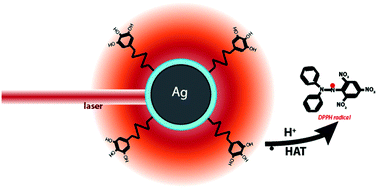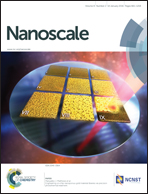Nanoantioxidant-driven plasmon enhanced proton-coupled electron transfer†
Abstract
Proton-coupled electron transfer (PCET) reactions involve the transfer of a proton and an electron and play an important role in a number of chemical and biological processes. Here, we describe a novel phenomenon, plasmon-enhanced PCET, which is manifested using SiO2-coated Ag nanoparticles functionalized with gallic acid (GA), a natural antioxidant molecule that can perform PCET. These GA-functionalized nanoparticles show enhanced plasmonic response at near-IR wavelengths, due to particle agglomeration caused by the GA molecules. Near-IR laser irradiation induces strong local hot-spots on the SiO2-coated Ag nanoparticles, as evidenced by surface enhanced Raman scattering (SERS). This leads to plasmon energy transfer to the grafted GA molecules that lowers the GA–OH bond dissociation enthalpy by at least 2 kcal mol−1 and therefore facilitates PCET. The nanoparticle-driven plasmon-enhancement of PCET brings together the so far unrelated research domains of nanoplasmonics and electron/proton translocation with significant impact on applications based on interfacial electron/proton transfer.


 Please wait while we load your content...
Please wait while we load your content...